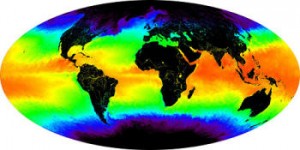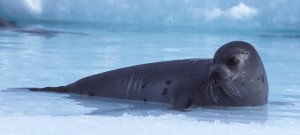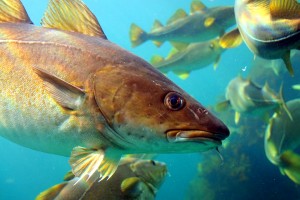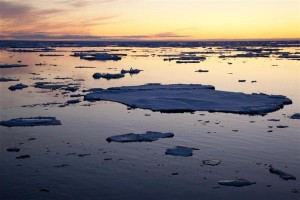Why migrate?
Sometimes, a species’ physiological demands are incongruent with what their environment offers. Instead of allowing evolution to gradually alter their physiology, migration offers a far more immediate solution: organisms set up camp at different locations that better accommodate their needs.

***However, traditional migration patterns and species ranges have shifted in response to anthropogenic effects, including the warming of the ocean.***
Rising sea temperatures will inevitably alter the location, strength and persistence of thermal fronts, thus changing migratory routes, timings, and species distribution (Hunter et al. 2004) (Sims et al. 2006). Marine fishes and invertebrates respond to ocean warming through distribution shifts, generally to higher latitudes and deeper waters. Species are migrating north at an average rate of 40 to 45 km/decade and within the next 41 years, a 60% shift of species is predicted to relocate towards northern waters (Cheung et al. 2013).

What species are hot and bothered?
- In the Arctic and Antarctic, breeding and feeding habitats of migratory seals and seabirds will be reduced from the substantial contraction in sea-ice cover (Barber and Iacozza 2004) (Croxall et al. 2002).
- Atlantic cod populations have shifted northward in their distribution. This is thought to be the result of a mismatch between trophic levels: zooplankton prey – which are crucial for first-feeing cod larvae (Beaugrand et al. 2003) – have moved north, perhaps enticing cod to do the same (Perry et al. 2005).
- Baleen whales, who migrate between tropical and polar waters, must endure longer journeys and reduced feeding opportunities as suitable bioclimatic zones creep poleward (Learmonth et al. 2006)
- Leatherback turtles are expanding their range into higher latitudes as ocean temperatures warm (McMahon & Hays 2006).
- 36 fish stocks have shifted polewards in the Northest United States (Nye et al. 2009)

Why are they moving?
Warming waters are affecting the composition of ecosystems – either directly, by an inability to tolerate an increase in temperature or indirectly, by following food sources that have moved themselves. And thermally sensitive species are the kingpin to predicting the cascade of ecological change of what might move, where and when they’ll move, and how their poleward migration affects others around them.
What are the consequences?
Economically, fisheries can be affected by ‘tropicalization’ of catch where there’s an increase in the dominance of warm-water species. Cheung et al. (2013) show that ocean warming has already affected global fisheries in the past four decades. This emphasizes the urgent demand to design adaptation plans to suppress the consequences of ocean warming on the economy and food security in coastal communities, particularly in tropical regions. Biologically, there’s a looming possibility of losing substantial biodiversity and ecosystem function and services attributed to ocean warming.

What Can We Do?
On a long-term scale, I think that the shifting ranges of species needs to be heavily considered in conservation planning. Especially in the case of protected areas that are more or less spatially fixed, protection should encompass the probability of organisms migrating to a higher latitude. Conservation policy should therefore have a flexible element – in the likelihood that a species or system shifts its range away from the equator – aiming to protect them wherever they go instead of just protecting them as long as they’re there. On a short-term scale, we need to identify how the livelihoods of people are affected by poleward migration, especially in the fishing industry and tropics.
Sources
Barber, DG and J Iacozza. 2004. Historical analysis of sea ice conditions in M’Clintock Channel and the Gulf of Boothia, Nunavut: implications for ringed seal and polar bear habitat. Arctic. 57: 1-14.
Beaugrand, G, KM Brander, JA Lindley, S Souisso, and PC Reid. 2003. Plankton effect on cod recruitment in the North Sea. Nature. 426: 661-664.
Cheung W, R Watson, and D Pauly. 2013. Signature of ocean warming in global fisheries catch. Nature. 497: 365-368.
Croxall, JP, PN Trathan, and EJ Murphy. 2002. Environmental change and Antarctic seabird populations. Science. 297: 1510-1514.
Hunter, E, JD Metcalfe, GP Arnold, and JD Reynolds. 2004. Impacts of migratory behaviour on population structure in North Sea plaice. Journal of Animal Ecology. 73: 377-385.
Learmonth, JA, CD Macleod, MB Santos, GJ Pierce, HQ Crick, and RA Robinson. 2006. Potential effects on climate change on marine mammals. Oceanographic Marine Biology. 44: 429-456.
McMahon, CR and GC Hays. 2006. Thermal niche, large scale movements and implications of climate change for a critically endangered marine vertebrate. Global Change Biology. 12: 1330-1338.
Nye, JA., JS Link, JA Hare, and WJ Overholtz. 2009. Changing spatial distribution of fish stocks in relation to climate and population size on the northeast United States continental shelf. Marine Ecology Progress Series. 393: 111-129.
Perry, AL, PJ Low, JR Ellis, and JD Reynolds. 2005. Climate chanfe and distribution shifts in marine species. Science. 308: 1912-1913.
Sims, DW, MJ Witt, AJ Richardson, EJ Southall, and JD Metcalfe. 2006. Encounter success of free-ranging marine predator movements across a dynamic prey landscape. Proceedings of the Royal Society of Biology. 273: 1195-1201.